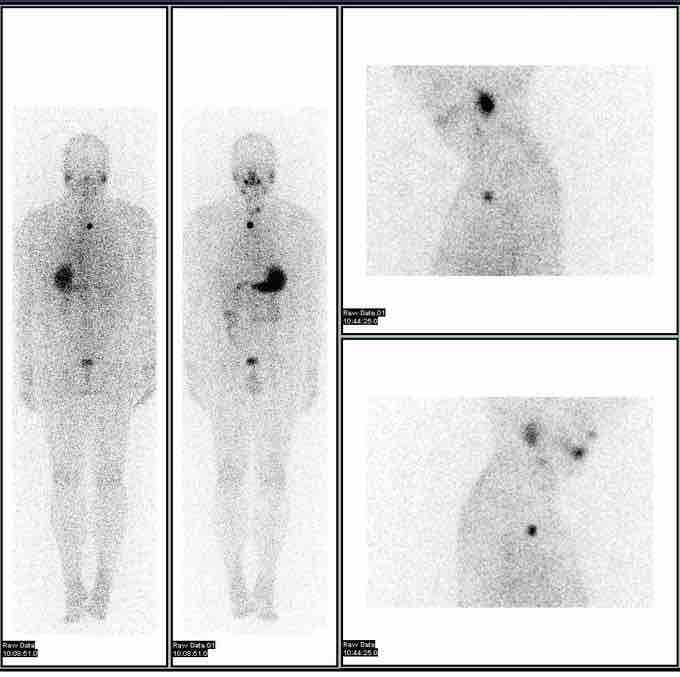Nuclear medicine is a medical specialty that involves the application of radioactive substances in the diagnosis and treatment of a disease.
In nuclear medicine procedures, radionuclides are combined with other elements to form chemical compounds. These radiopharmaceuticals, once administered to the patient, can localize to specific organs or cellular receptors. This property of radiopharmaceuticals allows nuclear medicine the ability to image the extent of a disease process in the body. These images are based on cellular function and physiology, rather than on physical changes in the tissue anatomy. Therefore, with some diseases, nuclear medicine studies can identify medical problems at an earlier stage than other diagnostic tests.
Diagnosis
In nuclear medical imaging, radiopharmaceuticals are taken internally, either intravenously or orally. After this, external detectors capture and form images from the radiation that is emitted by the radiopharmaceuticals. This process is unlike a diagnostic X-ray, where external radiation is passed through the body to form an image. Nuclear medicine differs from most other imaging in that diagnostic tests primarily show the physiological function of the system being investigated, as opposed to traditional anatomic imaging, such as CT or MRI.

Iodine-123 whole-body scan
These images are scans used in the evaluation of thyroid cancer using the isotope iodine-123.
Common isotopes that are used in nuclear imaging include: fluorine-18, gallium-67, krypton-81m, rubidium-82, nitrogen-13, technetium-99m, indium-111, iodine-123, xenon-133, and thallium-201.
Treatment
In addition to imaging, radionuclide therapy can be used to treat conditions such as hyperthyroidism, thyroid cancer, and blood disorders. The radiopharmaceuticals used in nuclear medicine therapy emit ionizing radiation that travels only a short distance. This thereby minimizes unwanted side effects and damage to noninvolved organs or nearby structures. For this type of therapy, yttrium-90 and iodine-131 are the most commonly used isotopes.